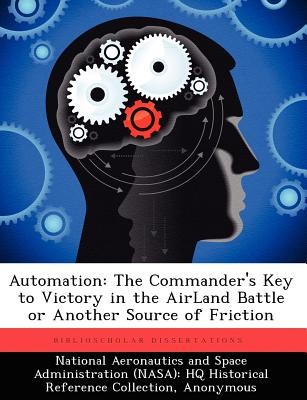
- We will send in 10–14 business days.
- Author: William S Pennypacker
- Publisher: BiblioScholar
- ISBN-10: 1249562074
- ISBN-13: 9781249562078
- Format: 18.9 x 24.6 x 0.3 cm, softcover
- Language: English
- SAVE -10% with code: EXTRA
Reviews
Description
This monograph examines the effect on the division command and control system of developing automation. As twentieth century war has gained in complexity, the U.S. Army has attempted to improve the means available for tactical command and control. A major part of that effort has been the incorporation in recent years of automated command and control devices in the Army Tactical Command and Control System (ATCCS). This paper asks what will be the impact of the emerging automation technology on the division commander's ability to command and control the division in battle? The monograph seeks to answer that question through the following methodology. It first examines the theoretical basis of tactical command and control. Having established a foundation, it reviews the evolution of divisional command and control from World War II to the present. It next describes current U.S. Army doctrine for tactical command and control, recent developments in the Army Tactical Command and Control System architecture, and the structure of the automated Maneuver Control System. Finally, recent experiences with the Maneuver Control System are reviewed to illustrate the benefits and drawbacks of automation to the division commander. The paper concludes that automation will be an essential tool in the AirLand Battle. Without its ability to provide information management for decision support, the division commander cannot effectively employ his forces in depth on the battlefield. For the future, the study suggests current acquisition efforts need to become more focused to ensure the best tools are chosen from the plethora available. Finally, it is recommended that integration of automation into the force structure deserves more attention in order to overcome user resistance and to make best use of this command and control aid.
EXTRA 10 % discount with code: EXTRA
The promotion ends in 18d.05:52:01
The discount code is valid when purchasing from 10 €. Discounts do not stack.
- Author: William S Pennypacker
- Publisher: BiblioScholar
- ISBN-10: 1249562074
- ISBN-13: 9781249562078
- Format: 18.9 x 24.6 x 0.3 cm, softcover
- Language: English English
This monograph examines the effect on the division command and control system of developing automation. As twentieth century war has gained in complexity, the U.S. Army has attempted to improve the means available for tactical command and control. A major part of that effort has been the incorporation in recent years of automated command and control devices in the Army Tactical Command and Control System (ATCCS). This paper asks what will be the impact of the emerging automation technology on the division commander's ability to command and control the division in battle? The monograph seeks to answer that question through the following methodology. It first examines the theoretical basis of tactical command and control. Having established a foundation, it reviews the evolution of divisional command and control from World War II to the present. It next describes current U.S. Army doctrine for tactical command and control, recent developments in the Army Tactical Command and Control System architecture, and the structure of the automated Maneuver Control System. Finally, recent experiences with the Maneuver Control System are reviewed to illustrate the benefits and drawbacks of automation to the division commander. The paper concludes that automation will be an essential tool in the AirLand Battle. Without its ability to provide information management for decision support, the division commander cannot effectively employ his forces in depth on the battlefield. For the future, the study suggests current acquisition efforts need to become more focused to ensure the best tools are chosen from the plethora available. Finally, it is recommended that integration of automation into the force structure deserves more attention in order to overcome user resistance and to make best use of this command and control aid.


Reviews